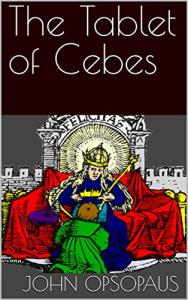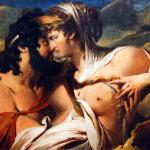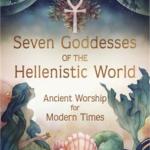Review of The Tablet of Cebes: With Illustrations adapted from Hans Holbein the Younger by John Opsopaus PhD

The Tablet of Cebes is a document that describes “a tablet or plaque erected in a temple of Kronos by a Pythagorean initiate”, the philosopher Cebes of Thebes (c.430– 350 BCE) who is not actually mentioned in the text. Cebes “lived in the fifth century BCE (contemporary with Socrates), but The Tablet seems to have been written … from third century BCE to the second CE, but the first century CE or a little earlier seems most likely.” The text “records an explanation of the symbols as presenting a Way for living well and the Path of spiritual initiation.” So, the Tablet of Cebes was almost certainly not written by Cebes, while the tablet itself may or may not have existed. The description of the tablet, however, has taken on a life of its own and there is much to be derived from studying it. In fact, The Tablet of Cebes was read and cited for many centuries until interest in it waned in the twentieth century.
The text opens with some young gentlemen beholding the tablet, whereupon an old man approaches them to explain its meaning. The road to happiness lies in true education – mental and character development – leading to philosophical wisdom by journeying through a world populated by personifications of happiness, fortune, vices and virtues.
Traditionally an inspired text could be interpreted simultaneously at four levels: the literal, allegorical, symbolical, and anagogical.
“At the literal level the text is interpreted to mean exactly what it says. …
At the allegorical level, each person, object, attribute, or action may denote a non-literal alternative meaning. So, for example, a woman may represent a virtue or vice, and advancing along a path may represent the progress of life or the path of spiritual initiation. …
The symbolical level cannot be expressed fully in words, which is why images, such as on this tablet, are required. Psychologically, the unconscious mind creates symbols to convey meanings that cannot be expressed in words. …
The highest, or deepest, level of interpretation is the anagogical, so called because of its ability to lead (-agô) the soul upward (ana-) toward divine union; in the esoteric traditions, the anagôgê is the spiritual practice leading to divine union. … “
It should be noted that “an author can compose only on the literal and allegorical levels, for these are the levels of conscious meaning; even the allegorical level can assume a life of its own, if the author is sufficiently inspired. … if the author is inspired by the Muse … then their words or hands are guided by the gods, who put into the words additional meaning of which the author is often unaware. … In any case, one sign of a truly inspired text is that it has meaning at all four levels.”
An important part of deriving as much benefit as possible from studying The Tablet is direct contemplation of an actual image. A number of reconstructions of the images that have been made over the years based on the descriptions. This translation of The Tablet is illustrated by a 1521 woodcut by Hans Holbein the Younger (1497/8–1543).
A portion of Chapter IV jumped out at me. The old man who had approached the young gentlemen held up his staff and extended it toward a vision:
“First, you must understand this, that this place is called Life. And the large crowd standing around the Gate are those wanting to enter into Life. The Old Man, standing above, holding a scroll in his hand, and with the other hand seeming to show something, he is called Daimôn; he commands those entering to do what it is necessary for them if they want to enter Life; he shows what sort of Path they must tread, if they wish to be saved in Life.”
The way I personally would interpret this is as follows, and serves as just one example. Each of us should find our own interpretation.
On a literal level, we have an Old Man with a curious name directing a large crowd telling them how they should lead their lives if they wish to enter the Gates of the city.
On an allegorical level it should be noted that each of us has a Personal Daimôn, which acts as a guide and a spiritual advisor. In later centuries this entity became known as our Holy Guardian Angel, while in recent times many refer to it as the Higher Self. The function of the Personal Daimôn is to enable us to find the exact Path we should be treading. To a Thelemite, this is a clear reference to finding one’s True Will, which is the divinely sanctioned path we should be on, rather than exercising our Free Will, where numerous options open up, none of which are as beneficial for spiritual development.
On a symbolical level ancient Greek art has very little in the way of representations. I would opt to visualize a winged entity, like a Holy Guardian angel or a Roman winged genius.
The anagogical level leads the soul upward toward divine union, which just happens to be the function of the Personal Daimôn. So, I would suggest visualizing an unimpeded flow of information from the Personal Daimôn to make this process as effective as possible.
As stated previously, The Tablet of Cebes was read and cited for many centuries until interest in it waned in the twentieth century. Many spiritual seekers have benefited from studying the text in the past and it is hoped that many more will benefit in the future.
One final note. The review copy I was supplied contained an introduction and the translated text only. John Opsopaus PhD has informed me that he will be including a detailed commentary in the actual print version which will be of great benefit to readers who’ll have a comprehensive starting point for their own interpretations.
Tony Mierzwicki
Author of Hellenismos: Practicing Greek Polytheism Today and Graeco-Egyptian Magick: Everyday Empowerment.
















